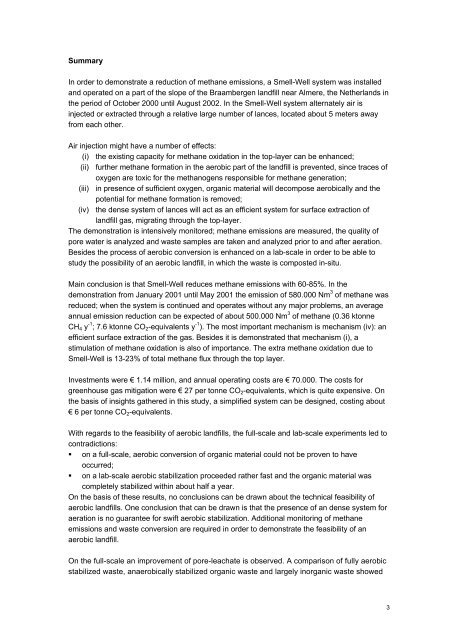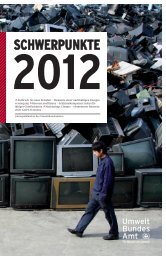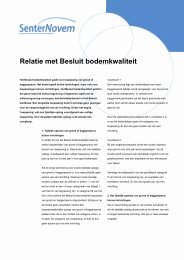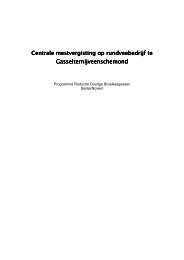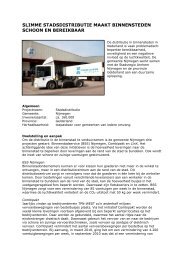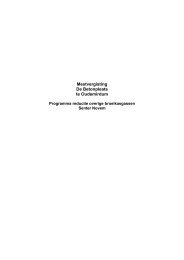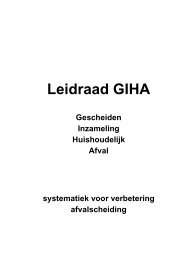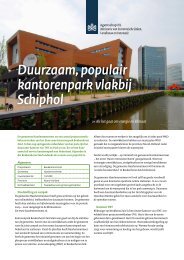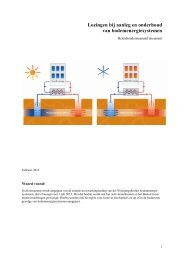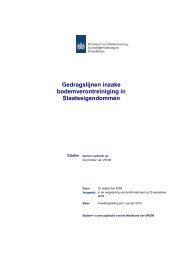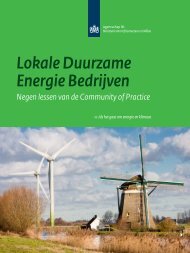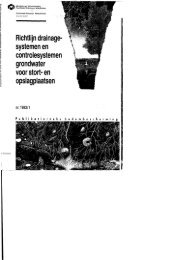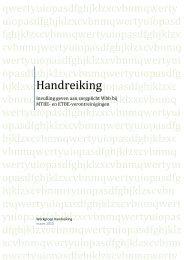afvalzorg Deponie methaanreductie door actieve beluchting en ...
afvalzorg Deponie methaanreductie door actieve beluchting en ...
afvalzorg Deponie methaanreductie door actieve beluchting en ...
You also want an ePaper? Increase the reach of your titles
YUMPU automatically turns print PDFs into web optimized ePapers that Google loves.
Summary<br />
In order to demonstrate a reduction of methane emissions, a Smell-Well system was installed<br />
and operated on a part of the slope of the Braamberg<strong>en</strong> landfill near Almere, the Netherlands in<br />
the period of October 2000 until August 2002. In the Smell-Well system alternately air is<br />
injected or extracted through a relative large number of lances, located about 5 meters away<br />
from each other.<br />
Air injection might have a number of effects:<br />
(i) the existing capacity for methane oxidation in the top-layer can be <strong>en</strong>hanced;<br />
(ii) further methane formation in the aerobic part of the landfill is prev<strong>en</strong>ted, since traces of<br />
oxyg<strong>en</strong> are toxic for the methanog<strong>en</strong>s responsible for methane g<strong>en</strong>eration;<br />
(iii) in pres<strong>en</strong>ce of suffici<strong>en</strong>t oxyg<strong>en</strong>, organic material will decompose aerobically and the<br />
pot<strong>en</strong>tial for methane formation is removed;<br />
(iv) the d<strong>en</strong>se system of lances will act as an effici<strong>en</strong>t system for surface extraction of<br />
landfill gas, migrating through the top-layer.<br />
The demonstration is int<strong>en</strong>sively monitored; methane emissions are measured, the quality of<br />
pore water is analyzed and waste samples are tak<strong>en</strong> and analyzed prior to and after aeration.<br />
Besides the process of aerobic conversion is <strong>en</strong>hanced on a lab-scale in order to be able to<br />
study the possibility of an aerobic landfill, in which the waste is composted in-situ.<br />
Main conclusion is that Smell-Well reduces methane emissions with 60-85%. In the<br />
demonstration from January 2001 until May 2001 the emission of 580.000 Nm 3 of methane was<br />
reduced; wh<strong>en</strong> the system is continued and operates without any major problems, an average<br />
annual emission reduction can be expected of about 500.000 Nm 3 of methane (0.36 ktonne<br />
CH4 y -1 ; 7.6 ktonne CO2-equival<strong>en</strong>ts y -1 ). The most important mechanism is mechanism (iv): an<br />
effici<strong>en</strong>t surface extraction of the gas. Besides it is demonstrated that mechanism (i), a<br />
stimulation of methane oxidation is also of importance. The extra methane oxidation due to<br />
Smell-Well is 13-23% of total methane flux through the top layer.<br />
Investm<strong>en</strong>ts were € 1.14 million, and annual operating costs are € 70.000. The costs for<br />
gre<strong>en</strong>house gas mitigation were € 27 per tonne CO2-equival<strong>en</strong>ts, which is quite exp<strong>en</strong>sive. On<br />
the basis of insights gathered in this study, a simplified system can be designed, costing about<br />
€ 6 per tonne CO2-equival<strong>en</strong>ts.<br />
With regards to the feasibility of aerobic landfills, the full-scale and lab-scale experim<strong>en</strong>ts led to<br />
contradictions:<br />
on a full-scale, aerobic conversion of organic material could not be prov<strong>en</strong> to have<br />
occurred;<br />
on a lab-scale aerobic stabilization proceeded rather fast and the organic material was<br />
completely stabilized within about half a year.<br />
On the basis of these results, no conclusions can be drawn about the technical feasibility of<br />
aerobic landfills. One conclusion that can be drawn is that the pres<strong>en</strong>ce of an d<strong>en</strong>se system for<br />
aeration is no guarantee for swift aerobic stabilization. Additional monitoring of methane<br />
emissions and waste conversion are required in order to demonstrate the feasibility of an<br />
aerobic landfill.<br />
On the full-scale an improvem<strong>en</strong>t of pore-leachate is observed. A comparison of fully aerobic<br />
stabilized waste, anaerobically stabilized organic waste and largely inorganic waste showed<br />
3


